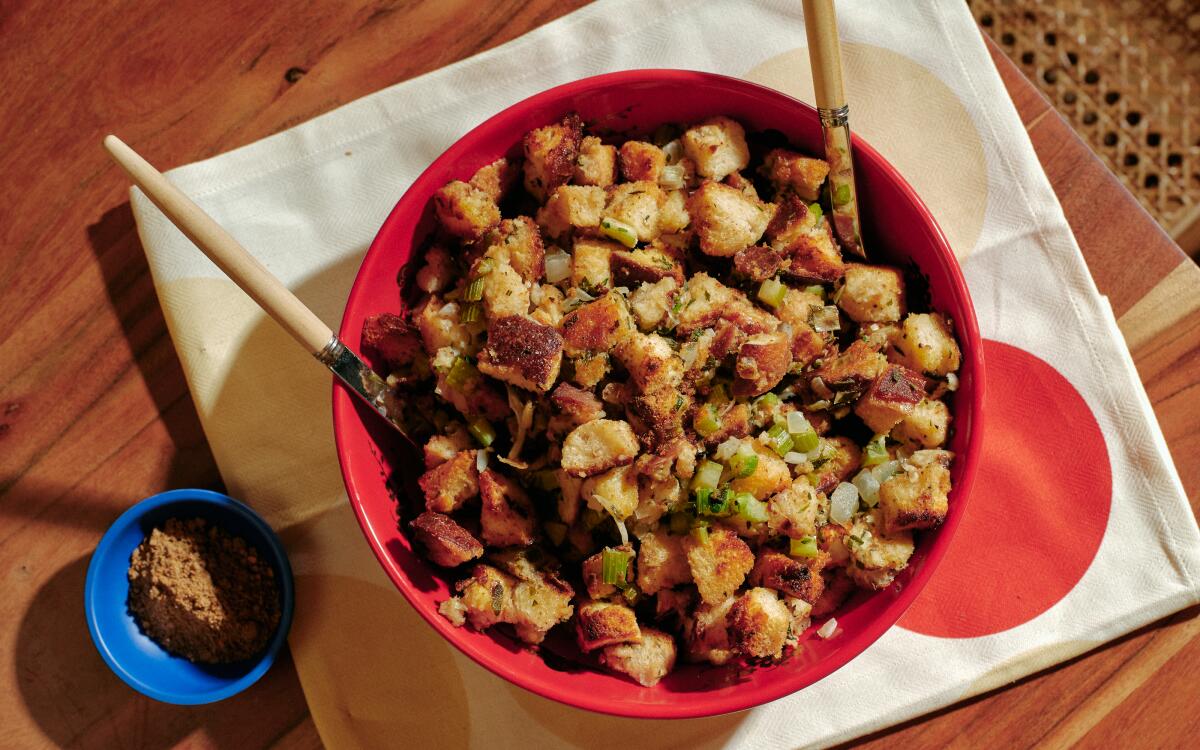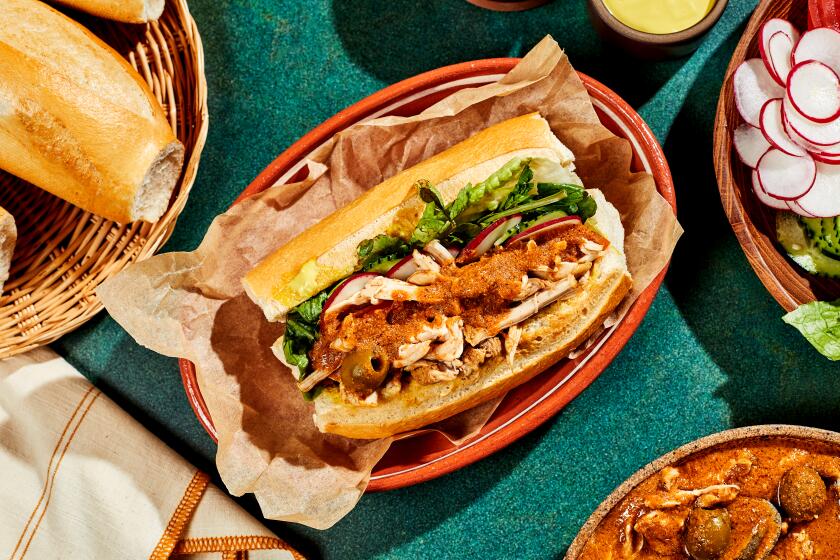Jing's Mala Stuffing

- Share via
This is the ultimate stuffing. The warm flavors of traditional hardy herbs — sage and rosemary — are mixed with a chile-spice blend that adds a layer of complexity. These heady spices make a fragrant stuffing that might be the star of the Thanksgiving table.
Mala Stuffing
Heat the oven to 350 degrees. Melt 2 tablespoons of the butter and brush a 9-by-13-inch pan and set aside. Place the toasted bread cubes in a very large bowl and set aside.
Melt the remaining ½ cup butter in a large skillet over medium heat, then stir in the onion, celery and garlic, mala spice mix, salt and pepper. Cook until the onions and celery soften, 8 to 10 minutes. Stir in the sage, parsley and rosemary and 1 cup of stock; cook for an additional minute.
Pour the onion-celery mixture over the bread cubes and toss well to coat.
In a small bowl or measuring cup, whisk together the remaining 1½ cups stock and the eggs.
Pour that mixture over the bread cubes; stir and fold into the bread cubes until thoroughly combined. Bake the stuffing for 45 to 50 minutes, until the temperature registers 160 degrees on an instant-read thermometer. If the stuffing is getting too browned, you can tent it with foil.
Serve immediately, or you can store it covered in the refrigerator. Remove from the refrigerator 1 hour before reheating it in the oven.
Mala Spice Mix
In a wok or frying pan over medium-low heat, toast the chiles, cumin seeds, fennel seeds, star anise, cardamom seeds and cloves until fragrant, stirring frequently, about 3 minutes. Transfer to a small bowl and let cool. Add the sugar and kosher salt. Use a mortar and pestle or a spice grinder and grind to a fine powder. Makes ½ cup. Store in an airtight container for up to 2 weeks.
Jing Gao uses Fly by Jing’s Mala Spice Mix. A mala spice mix recipe adapted from “The Book of Sichuan Chili Crisp: Spicy Recipes and Stories from Fly by Jing’s Kitchen” (Ten Speed Press) is included here.
Gao recommends erjingtiao chiles. Alternatively, Chinese markets carry dried red chiles (la jiao gan), sometimes labeled Sichuan or Chinese chiles. Dried arbol or other chiles are an option, but heat levels will vary.
Get our Cooking newsletter.
Your roundup of inspiring recipes and kitchen tricks.
You may occasionally receive promotional content from the Los Angeles Times.















